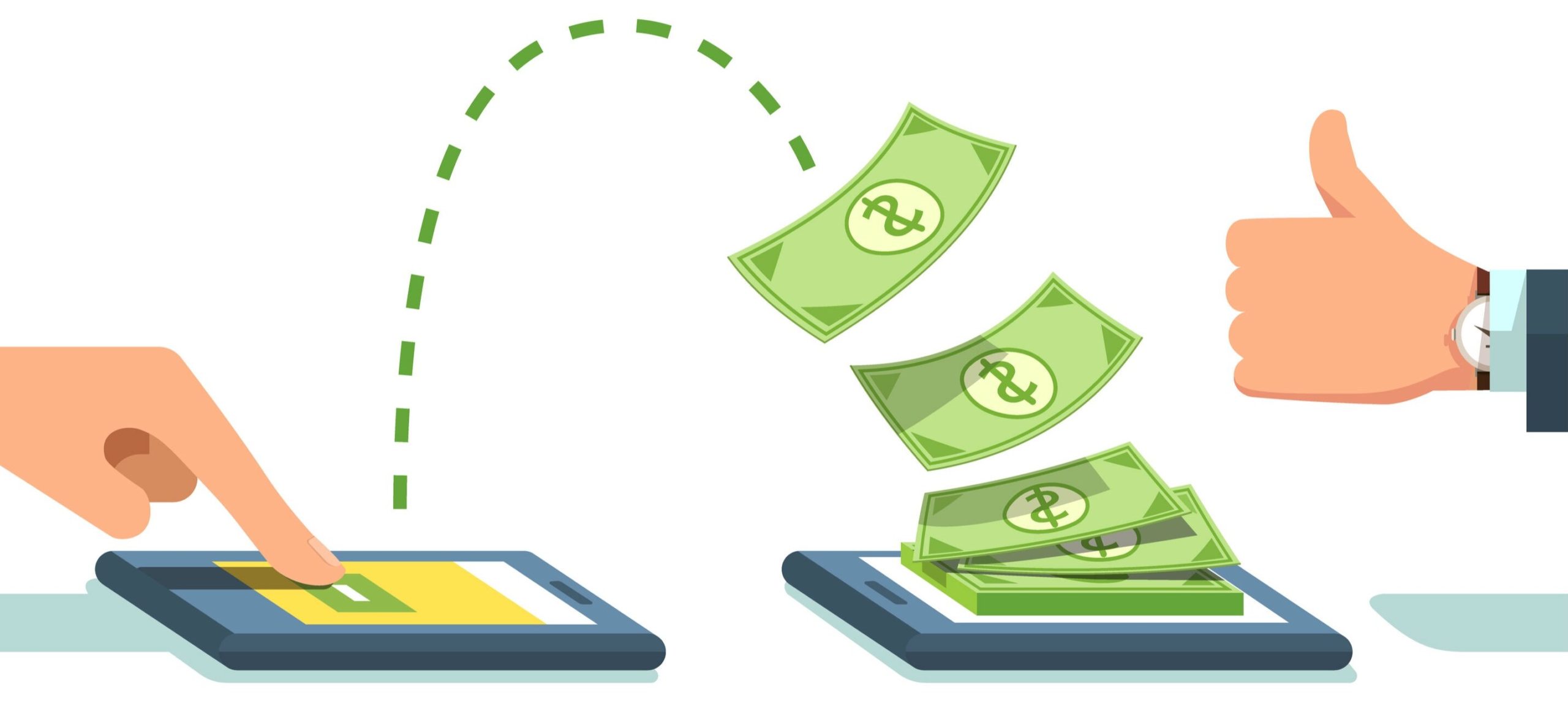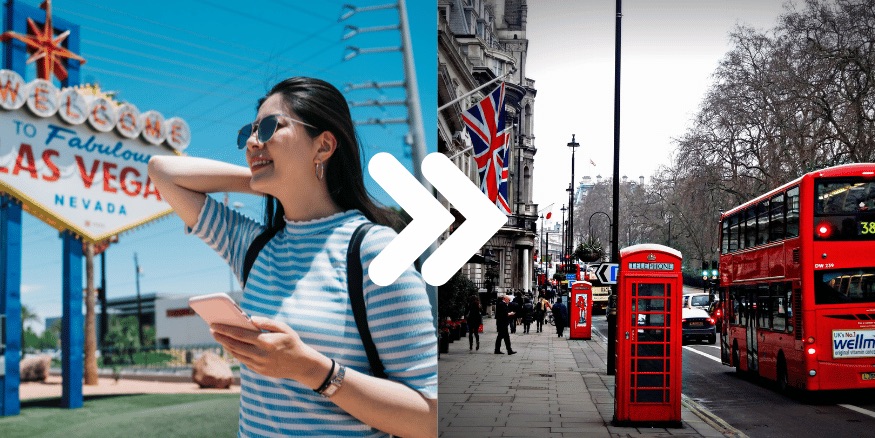If you have a payment from abroad sent to your regular UK bank account, you could get less than what you expect. Receiving money from abroad can be annoying due to high fees and a poor exchange rate offered by the traditional banks. A multi-currency account from Wise (ex TransferWise) could help you save money.
There are many reasons you might be expecting to receive money from abroad. Maybe a relative based overseas is making an international transfer to cover their share of the costs of your family holiday. Or perhaps you’re a business owner or freelancer issuing invoices to overseas clients.
Figuring out exactly what you’ll receive in your UK sterling bank account can be tough – and you could get a lot less than you expect if your sender uses a traditional high-street bank to send money to you.
This is because UK banks offer poor exchange rates and high transfer fees that can increase the cost of money transfer, and you end up getting less than what you expected.
All you need to know about receiving money from abroad
When you’re receiving money from abroad, you need to know the exchange rate used for the currency conversion and any fees that are going to be deducted from the amount being transferred.
A simple Google search is all you need to find the exchange rate for your currency pairing. However, banks and money-transfer services may not offer their customers this exchange rate – known as the mid-market rate. Instead, they add a markup to the real, mid-market rate and keep the difference for themselves.
Here’s an example of how it works. I’m expecting to receive an international transfer of 1,000 USD to my UK sterling bank account, so I use Google – or a site such as XE.com – to see how much I will get in pounds.
Let’s say I find that the exchange rate of the day means that 1 dollar is equal to £0.81. My 1,000 USD should convert, therefore, to around £810.
However, the transfer is arranged using a bank which is offering an exchange rate of 1 USD = £0.75. That means in this example that I will only receive £750 – and that’s before any fees are taken into account.
The difference £60 – is kept by the bank. And naturally, the amount you could lose only gets bigger when you’re dealing with larger sums, making regular transfers or running a business that is trading internationally.
Shockingly, in this example, if I were expecting to receive a 10,000 USD transfer instead, I could get £600 less than I expect, thanks to a poor exchange rate offered by high street banks.
Therefore, it’s worth digging deeper to find the best way to receive money from abroad

Transfer Fees for Receiving Money from Abroad
As well as the exchange rate, you need to know what fees will be charged on your international transfer. Most banks will charge the sender an admin fee, which could be around £25. There can also be a fee added by the recipient’s bank, so you’ll need to check your own account terms and conditions. This is why we don’t recommend receiving money from abroad through a traditional bank.
Typically, the sender pays the transfer fee. However, in many cases, the recipient banks also charge a fee to settle the money in the recipient’s account. If an intermediary bank is involved (which is quite common if you send money via the SWIFT network) then there are extra hidden fees involved.
Receiving fees
Even though the transfer fee is paid by the sender, your bank may charge you a processing fee to settle the money in your account. This fee is deducted from the final amount that is transferred to your account (from the money that you receive). Check with your bank before you arrange any payments and receive money from abroad.
Intermediary fees
Banks use the SWIFT network to make international money transfers. SWIFT (Society for Worldwide Interbank Financial Telecommunication) is a global network used by 12,000+ banks across 200+ countries to process international payments.
SWIFT network allows a bank to initiate an international transfer from any country, which is then routed through one or more banks before the money reaches the recipient’s account
In some cases, the banks have a direct connection with other banks and the Intermediary fees are not charged. However, in many cases, there are more banks involved in the chain (also known as the intermediary bank) to complete international transfers.
These intermediary banks charge a fee to facilitate international payments. The intermediary bank fees depend on the number of banks that were involved in the international money transfer. This fee can also increase the cost of receiving money from abroad to the UK.
Poor Exchange Rate
As we have explained above, banks add a hidden markup on the actual exchange rate (also known as the mid-market exchange rate). Even though the exchange rate is not a “fee”, it can certainly increase the cost when receiving money from abroad. This means you may end up receiving a lesser amount than what you expected.
Since a bank can establish its own rate to “buy” or “sell” foreign currency, banks add a “profit margin” or hidden markup that is not disclosed to the customer. This is one of the biggest reasons why you shouldn’t use a bank to receive money from abroad.

The Best Way to Receive Money from Abroad
If you’re making or receiving international money transfers, banks could be a bad choice. You could receive much less than you expect, thanks to a poor exchange rate and high fees – and may need to wait up to a week for your money to arrive.
International Money Transfer Service

Using international money transfer services like Wise (formerly TransferWise), XE.com and CurrencyFair is a cheap, safe, and fast way to receive money from abroad. You can receive money directly to your bank account with no extra fees involved.
To set up an international transfer, you just need to provide your bank details to the sender. The sender can create an account with any of the preferred providers and set up the transfer.
The sender has to pay small transaction fees that are much cheaper than using a high-street bank. The sender also has a range of payment options such as bank transfer, credit, or debit card and even Apple Pay or Google Pay. The service provider will then transfer these funds into your bank account.
International money transfer services like Wise (formerly TransferWise) also offer a mid-market exchange rate (which is the “real” exchange rate that you see on Google). Wise offers low, transparent fees that can be 8x to 10x times cheaper than the traditional banks.
Multi-currency Account

An alternative is to make and receive international payments using a specialist service such as Wise (formerly TransferWise), which can work out cheaper – and significantly faster – than using a regular high-street bank.
With a Wise Multi-currency account, you can generate local details and get paid like a local, with zero receiving fees, in USD, EUR, GBP and AUD.
That means that, if you’re expecting a payment in EUR for example, you can instantly generate a local IBAN and all the details needed to let your sender make a domestic transfer, and avoid the high costs associated with international payments.
You can then hold your money in your multi-currency account, in more than 50 currencies, and switch between them for a low fee – for most major currencies, this is between 0.35% to 0.9% of the transaction value.
The Wise multi-currency account is a useful tool if you need to deal with different currencies regularly. It’s a smart option if you live, work, study or have retired abroad – or if you simply love to travel regularly.
A multi-currency account is great for business, too. If you run an ecommerce business, or you’re a freelancer, or online seller making and receiving frequent international payments, the borderless account could help you keep more of your hard-earned money.
Bank-to-Bank Transfer [Not recommended]
As we have explained above, you can receive money from abroad to the UK through a bank transfer using a high-street bank. This is just a simple transfer between one bank account to another (in a different country) but certainly, an expensive way to send and receive money from abroad.
To send money via bank transfer, the sender has to set up the international transfer using online banking or walking to the local branch. You’ll need to provide your bank details which include your account number, account name and address and the SWIFT code or Bank Identifier Code (BIC).
Bank-to-bank transfers can be quite costly because banks offers high fixed fees on international payments and offer poor exchange rate by adding a margin to the exchange rate.
International Money Order [Not recommended]
You can also receive money from abroad via cheque. The sender can request an international bank draft from their local bank in any currency. However, this option may not be available in some countries.
In this method, the sender uses the funds from their bank account to get an internationally guaranteed cheque of any desired amount. The sender then has to post the cheque to the recipient overseas, which can be cashed by the receiver in the UK using your local UK bank account. The recipient may also choose to get the money deposited to their bank account after receiving money from abroad.
This is also not the best way to receive payments from abroad because you may still get a poor exchange rate when setting up an international money order.
Another downside is that it make takes weeks to get the bank drafts processed, delivered and settled to the recipient account in the UK – so it may not be the best option to receive the payments from abroad, especially if it’s urgent.
Cash Pick-up
You can arrange a cash transfer to collect international payments through a cash transfer service provider or a designated store. You don’t need an account to set up a cash transfer, but a reference number that will be used by the recipient to collect the amount, along with a valid photo ID.
How to Receive Money from Abroad

To receive money from abroad, using a Wise multi-currency account, you’ll need to take the following steps:
- Create your free account, online (wise.com).
- Select a currency.
- Generate local bank details for payments in major currencies such as EUR, AUD and USD.
- Give these local bank details to the person making the transfer, and the money will be delivered into your borderless account.
The exact details you will need to give depend on the currency in which you are being paid.
For example, for payments made in euros, you’ll usually have to provide an IBAN and SWIFT/BIC code. If you’re expecting a payment from the US, you could be asked for an ABA routing number. And for payments in AUD, you’ll probably have to provide a SWIFT or BSB code.
What details do I need to provide to receive money from abroad to UK
If you are expecting to receive a payment to a UK-based sterling bank account you’ll have to give the sender the following information:
- Your IBAN (international bank account number) or UK account number.
- Your bank’s SWIFT/BIC code.
- Your sort code and account number.
- Your full name and address as shown on the account.
- The amount and currency you’re expecting to receive.
Nobody wants to pay more than they have to, to send or receive money from abroad. The costs of international transfers can be quite a shock, and mean that you end up with far less than you might expect when you receive a payment from abroad. Don’t get caught out.
Check out the options available, and choose a service which offers the real mid-market exchange rate and a transparent fee structure, to make sure you keep as much as possible of your money.
How long does it take to receive money from abroad?
Banks typically take three to seven working days to process an international transaction. A specialist in international payments, such as Wise (formerly TransferWise), could be much faster. Most transfers done via Wise from the UK and Europe arrive within 24 hours, while in many cases the payments sent from the UK to Europe are delivered within seconds.
Receiving Money from Abroad: FAQs
What is the best way to receive money from abroad?
Here are some of the best ways to receive money from abroad
- Specialist money transfer services.
- Multi-currency account.
- International Bank-to-bank transfer.
- Cash pick-up.
- Mobile wallets.
How can someone send me money from another country?
If you’re making or receiving international money transfers, banks could be a bad choice. You could receive much less than you expect, thanks to a poor exchange rate and high fees – and may need to wait up to a week for your money to arrive.
Alternatively, using international money transfer services like Wise (formerly TransferWise), XE.com and CurrencyFair is a cheap, safe, and fast way to receive money from abroad. You can receive money directly to your bank account with no extra fees involved.
How much money can I receive from overseas?
There are no limits on the amount that you can receive or send abroad. However, the money received from abroad can be subject to tax depending on the nature of the payment and the transfer amount.
What information do I need to receive money internationally?
If you are expecting to receive a payment from abroad, you’ll have to give the sender the following information:
- Your account number (for example, IBAN or UK account number).
- Your bank’s SWIFT/BIC code.
- Your bank branch code (for example, sort code in the UK)
- Your full name and address as shown on the account.
Can I receive money from abroad directly to my bank account?
You can receive money from abroad directly to your bank account using international money transfer services like Wise (TransferWise), XE.com, and CurrencyFair. You just have to provide the bank details to the sender to set up the payments.
You can also receive money directly to your bank account using an international bank-to-bank transfer, but it would be quite expensive. Banks charges high fees to send and receive money and also offer poor exchange rate. Since banks add a margin (hidden markup) on the “actual” exchange rate, you would receive a lesser amount than what you expect.
Do I need an IBAN number to receive money from abroad?
IBAN is a form of an “account number” for European countries. You would need an IBAN number if you live in one of the European countries and want to receive money abroad (or even locally).
If you live outside Europe, you don’t need IBAN to receive international payments. However, you would still need an account number of a local bank (for example UK account number, US routing number, Canadian Transit Number, etc).
What Details Do You Need for a Bank Transfer?
If you are expecting to receive a payment from abroad, you’ll have to give the sender the following information:
- Your account number (for example, IBAN or UK account number).
- Your bank’s SWIFT/BIC code.
- Your bank branch code (for example, sort code in the UK)
- Your full name and address as shown on the account.
Do you have to pay tax if you send money from abroad?
Generally, you don’t have to pay any taxes to send money abroad. It is mostly a concern for the receiver, depending on the nature of the transaction and the transfer amount.
However, the law can be different in the country you live in. We recommend getting some advice from a tax consultant before you make an international transfer to remain fully compliant with local law and regulations.
How much money can I transfer without being taxed?
In this US, you can make international money transfer by using your annual gift tax exclusion. In 2023, you can give up to $16,000 to someone in a year (as a gift) and generally not have to deal with the IRS about it.
Do I need a SWIFT code to receive money?
Yes, you’ll need to provide SWIFT code or BIC code to receive money from abroad. The sender would also need your account number, account name and your address to set up an international transfer.
You can contact your bank to get the SWIFT code, or you can even search it on Google and get the SWIFT code of your bank when receiving money from aboard.
Is PayPal a safe way to receive money from strangers?
PayPal is a safe platform for both sender and the receiver. Therefore, it is totally safe to receive money from a stranger on PayPal.
However, PayPal is quite expensive if you want to receive money from abroad or locally. You can lose up to 5% of the translation amount on PayPal fees and exchange rates.
As an alternative, there are other safe and credible providers like Wise (TransferWise) that offer low transparent fees and the “real” exchange rate. It is totally safe to receive money from strangers, and you can end up saving 7x times on high transaction fees and bad FX rates.










